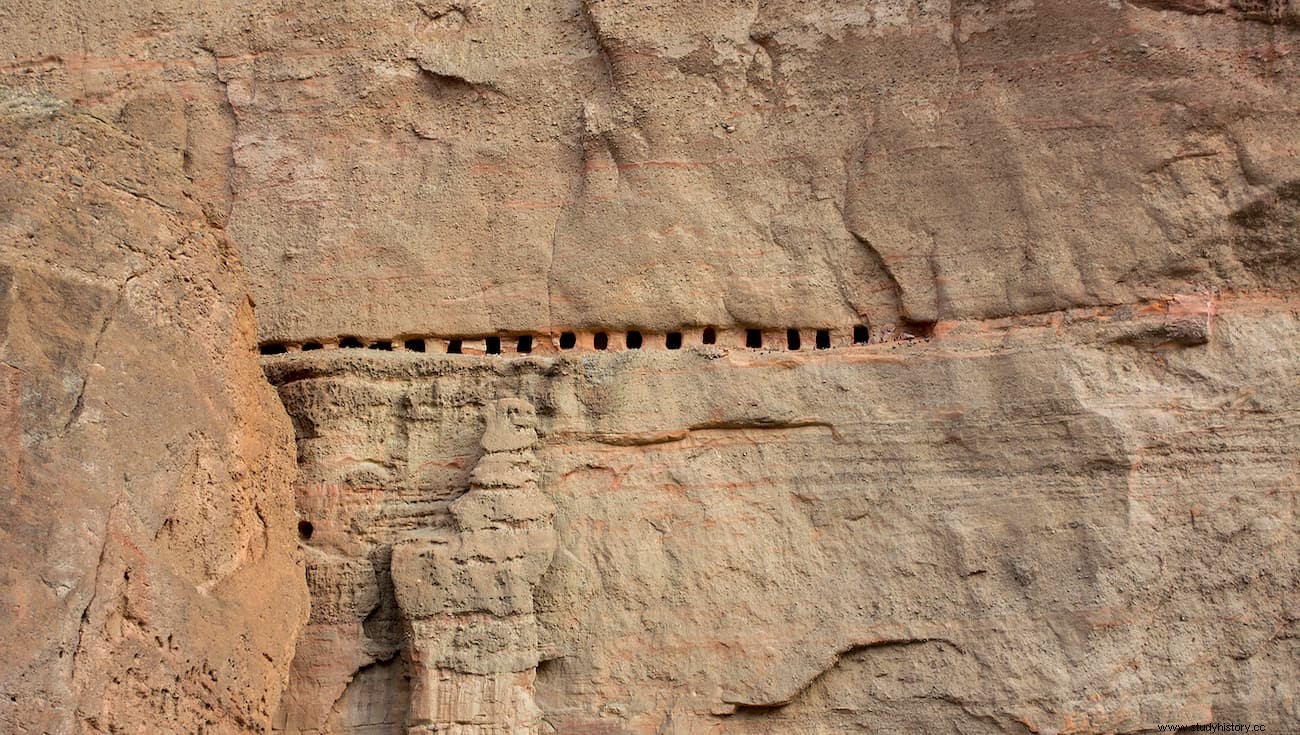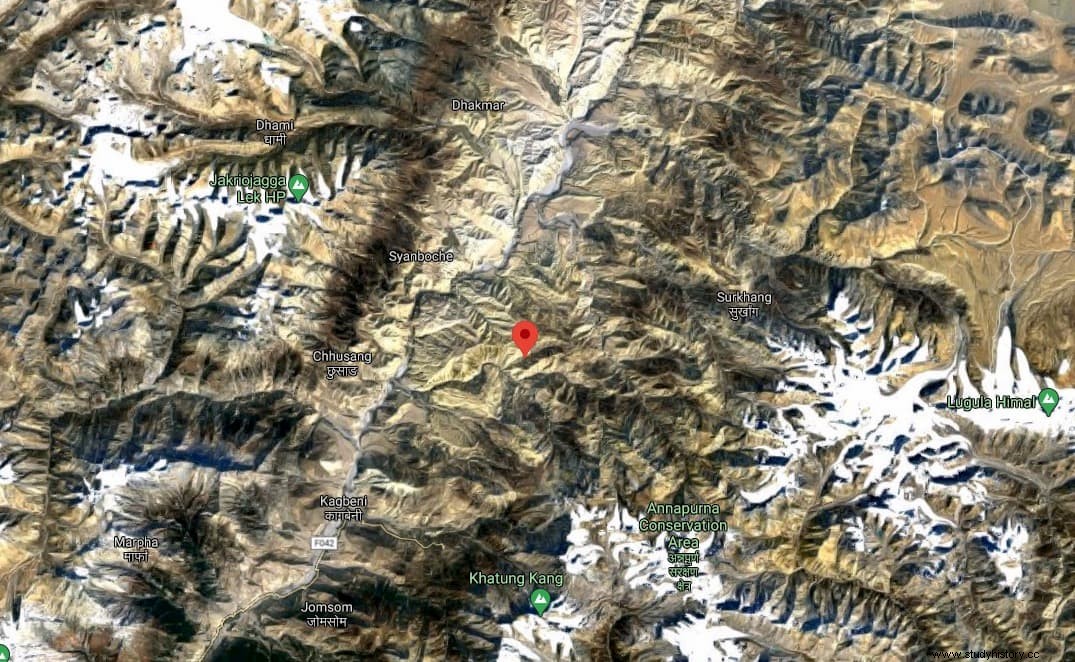In the steep rock walls of the Kali Gandaki river valley in Nepal, archaeologists have found an impressive number of some 10,000 man-made caves, carved into the slopes and into the mountains, sometimes at considerable altitude.
They are called Caves of Heaven , but also Mustang Caves , because they are in the Upper Mustang district, and no one knows who built them or why.
Numerous researchers have explored and studied the caves, in which partially mummified human bodies and skeletons were found, estimated to be 2,000 to 3,000 years old. Some were reused between the 12th and 14th centuries, since Buddhist objects such as paintings, sculptures and manuscripts appeared in them.

Nepal annexed the former kingdom of Lo in the 18th century, renaming it the Mustang district with the city of Lo Manthang as its capital. The place continued to have some autonomy and even a king until October 7, 2008, when Nepal became a federal republic in May of that year, after 240 years of monarchy.
However, the Upper Mustang area remained isolated and with restricted entry until 1992, which allowed both the natural and cultural conservation of the place (the traditional Tibetan languages are still spoken there).

As of 1992, archaeologists from Nepal and the University of Cologne were allowed access, who carried out the inspection and investigation of the caves.
In 2010, another 27 bodies with cut marks on their bones appeared in caves near Samdzong, dating from the 3rd to 8th centuries, a time before the arrival of Buddhism in the area.

One hypothesis relates the bodies to the Mustang tradition that is still maintained today:when a person dies, they are cut into small pieces to be eaten by vultures and other birds.
According to experts, the caves could have been funerary chambers at first, approximately from the year 1000 BC. Then they would have served as dwellings, already in the 10th century AD, and finally, from the 15th century AD. they would be used by the Buddhists as places of meditation and stores of provisions.

Some caves became monasteries, such as Luri Gompa, located on a ledge about 100 meters high and which is accessed by a path that climbs from the bottom of the Valley. It has two interconnected chambers, one of them with paintings.
DNA analysis of eight of the bodies found in the caves in 2016 revealed that those who created the caves more than 3,000 years ago came from the north and from the Tibetan plateau.

But who they were and, above all, how they managed to climb the almost vertical cliffs where they excavated the caves, remains a mystery.
